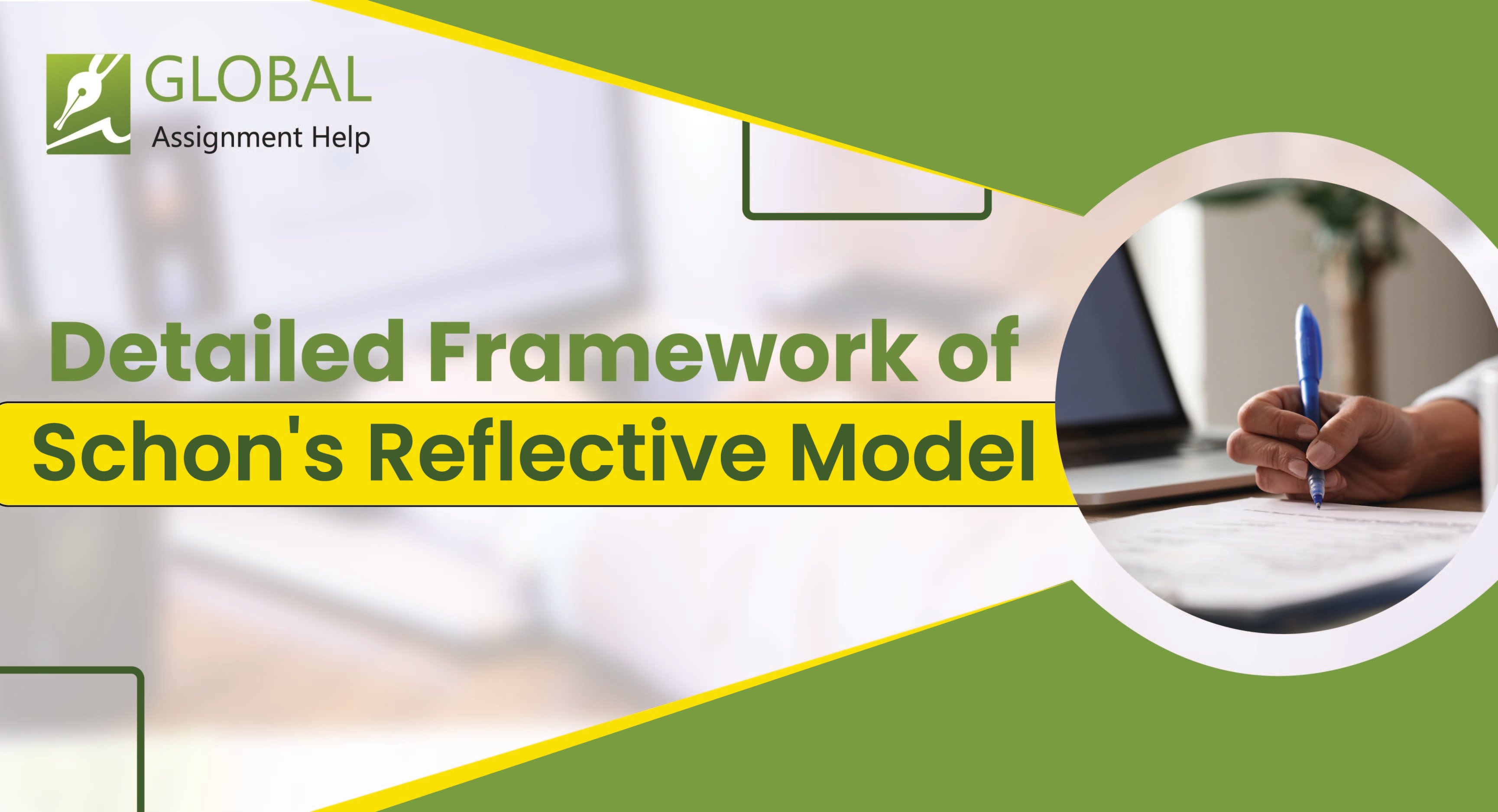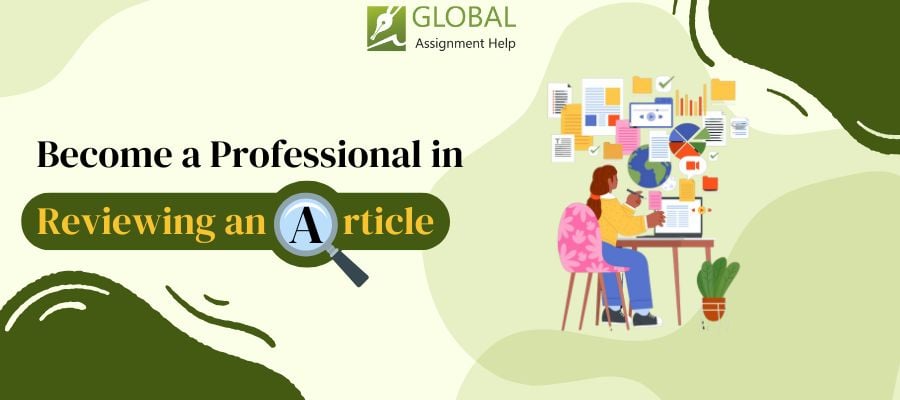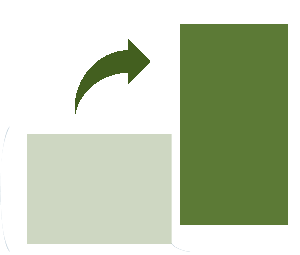Schon’s Reflective Model| Learn its Origin and Application
06 Feb 2025 491 18 minutes
Table of Contents
How Does Schon’s Reflective Help In the Education Department?Education is a vital part of our overall development. Without it being our backbone, we will not have any upstanding in society. You will be required to educate yourself suitably if you want to live comfortably all your life. So, it is crucial that you focus on your studies properly and acquire as much knowledge as possible before you go out into the real world.
But did you know that there are different tools for the overall development of a person personally and professionally? In this blog, you will learn about Schon’s Reflective Model, its application and its challenges. So, without wasting more time, let us start with this model's origin.
Explore Schon's ModelWhat Is Schon’s Reflective Model? | Its Origin?
Do you know who was Donald Schon? Well, let us tell you that he was an educational theorist who developed Schon’s Reflective Model for the personal and professional development of a person. The model is known far and wide, and professionals in many fields use this tool for their betterment.
According to this model, the theorist wants people to deeply assess their thoughts and emotions by reflectively thinking about them.
He wants you to ponder over your past experiences, whether they are successes or failures, and examine the reason behind them.
The Framework of Schon’s Reflective Model
As you saw what is Schon reflective model is and its origin, now we will learn about the detailed framework and see how it works to develop your overall personality. It is vital to understand this structure carefully as we will see how it applies to the real-life situation in the next heading.

Knowing In Action
This concept helps you to tap into the intuitive side of your brain and act according to it. It is like an iceberg that the vast knowledge and experience are buried under, but extremely powerful. Thus, it comes into action when you least expect it and is put to use in real-life situations. It is essential to understand this dynamic as it will help you to understand the actions that you take. Moreover, it encompasses the skills and expertise you have gained over time.
The process of bringing this in-depth knowledge to the surface by applying the in-action and on-action techniques to illuminate the reasons behind your actions. This technique invites you to reevaluate your actions. It helps to acknowledge your own shortcomings in your daily dealings and look for ways to tap into your inner instincts with more deliberation. Through reevaluation, what was once a mechanical, unexamined process becomes a matter for learning and further improvement, enriching the specialist’s skill set and the ability for adaptive, responsive action.
Reflection In Action
Reflection in action is the dynamics which help you to evaluate and adapt one’s decisions and act accordingly in real-time. It helps you to access your act while you are doing the task and make changes on the spot. It reaffirms the essence of thinking on your feet. Professionals, have to sometimes make split decisions while under immense pressure.
You need to ask questions to yourself while in the middle of performing a task, whether the path you have taken is the correct one. Is there a more effective solution to the problem? This method helps you to make timely decisions without any delay. However, this reflective practice does not happen out of the blue. There is a prior experience(knowing in action) and further clarification through contemplation of the actions that you took(reflection in action).
This process not only helps professionals and experts to take on spot decisions, but it also helps in their overall development. This practice empowers individuals to navigate crucial scenarios with confidence, adjusting their strategies to meet the needs of the moment with educated intuition and expertise.
Reflection on Action
This part plays a crucial role in the Schon model of reflection as it allows the individual to take a step back and reflect on the actions that he/she has taken and what will be the outcome. This happens in the quiet aftermath of action, which provides the space for accessing the actions taken and their critical analysis.
This stage allows the professionals and experts to scrutinize their own actions and to question the effectiveness of the solutions that they have used. It provides the person a space to grow by learning from their past experiences. Reflection on action goes past mere self-assessment, it is a chance to link the dots between hypothesis and procedure, recognizing patterns that may not have been apparent in the heat of the moment.
Moreover, it can have a more powerful effect if it is shared with peers and mentors who can provide you with added wisdom and understanding that will, in turn, aid you in enhancing your professional learning graph. Thus, it helps in bringing overall growth to the whole professional community.
Challenges of Schon’s Reflective Model
So, you saw the framework of Schon’s reflective model in the previous heading. Now, under this section, we will see the challenges faced by undertaking this reflective model. They are as follows:
Time-Consuming
Using this model of Schon’s can be extremely time-consuming as it works on the core of the problem. It is one of the challenges of Schon’s model, as there is always a time limit when you write an essay or any other academic paper. So, applying this model will take a considerable amount of time, which can lead, you to miss the deadline. So, it is sometimes not practical to use this method.
Leads to Overthinking
As this reflective practice asks a professional to ponder and analyze their actions, it can lead to a waste of a lot of time. It might not be in your best interest as it will lead you to go in deep to understand your actions, which can ultimately lead you to fall behind. So, it is sometimes difficult and not practical to use this model.
Counterproductive on Environment
Under this Schon’s reflective model, it is essential to have an atmosphere where you can have productive conversations and have a supporting surrounding. It is not always possible because you sometimes work in isolation and do not have the proper time to indulge in such long communications. Hence, it becomes difficult to deploy this technique.
Dependent on Resources
Schon’s reflective learning is dependent on the availability of resources at your disposal. It looks into whether you have time and appropriate training and if you can facilitate all the other things that are vital in implementing this model. You should be prepared to allocate funds for these resources, or this model will not work effectively to solve your problems.
Tips to Implement Schon’s Reflective Model
You saw what are the challenges that you might face in implementing this model. Therefore, to overcome some of the problems, we will, under this heading, see the real-life application of Schon’s reflection model. So, without any further delay, let us see what are those guidelines.
Create Reflection time
You should set aside an amount of time of your choosing to reflect on your actions. It is up to you how you will think back on your actions. It can be in the form of meditation, taking a quiet walk or exercising to reflect on the actions that you took.
Ask Questions
One of the tips on implementing Schon’s reflective model is, that you must ask yourself questions that make you think deeply about your actions. Questions like what did you gain from this experience? What will be the effect of your actions? Did my actions align with my values or not? It is vital to re-access yourself in the aftermath of your doings as it will help you look at the entire picture. If you face any problem in putting down a paper on this topic, you can also seek assignment help UK from experts.
Get Feedback
You should never hesitate to ask for constructive feedback from your peers, colleagues and trusted friends. You should share with them your experience and the actions that you took and ask for their opinions. It will give you a fresh set of eyes on the entire situation, and you can prepare yourself for future contingencies.
Set Targets for Improvement
Once you have recognised your problem zones and shortcomings, make a clear strategy on how you will improve yourself. It will aid you in staying attentive to your goals, and you can further work towards cultivating new skills that will allow you to add to your triumphs. So, you should always look for ways that can help you to better yourself.
Practice Compassion
When you reflect on your actions, you unearth certain emotions and feelings that are difficult to swallow. So, you need to practice compassion and kindness against yourself. You need to remember that this process is all about growth and learning, and it is all right to make mistakes along the way. Therefore, you should keep this point in mind.
Therefore, you learned how to apply Donald Schon's reflective practice in real life. It will help you to improve yourself and work towards making yourself better.
Difference Between Schon and Gibbs Model
Up until now, you have learned what is schon reflective model, its framework, shortcomings and tips to implement it in your real life. But this is not the only model which is available to you and many other theorists have come up with their different models. Therefore, in this subsection, we will see the distinction between Schon’s and Gibbs's reflective models.
1. Structure
The Gibbs reflective cycle has a set structure to follow that enlists outline, emotions, testing, examination, conclusion, and lastly, plan of action. It is defined as opposed to the schon’s reflective model, which has no defined structure and only focuses on reflection in action and on action. It is one of the major differences between the two.
2. Cornerstone
The Schon reflective model focuses on providing professional judgement on the basis of the best decisions available for the scenario. Whereas, Gibb's reflective cycle focuses on the study of an event systematically. It goes through the event by following the structure that is available and coming up with the solutions according to it.
3. Applicability
The Schon reflective model is applied when you want to reach a decision for the problem that you are facing. However, the Gibbs reflective cycle is best applicable in education and health care. Both models are used in separate fields and are applied accordingly.
Thus, you saw the distinction between Schon’s reflection model from Gibbs. You must follow the guidelines properly, and you will have no problem solving your problem in time.
Seek Our Experts Help to Learn Schon’s Reflective Model
You saw what is Schon's reflective model, its application and tips on how to apply it in real life. It helps you to make decisions on the basis of the solutions provided to you. Schon reflective model is widely used by experts and professionals who work in a high-pressure environment.
You can take the aid of our professionals as they have years of knowledge in this field and will deliver you a document with all the required information. You can also seek admission essay writing service if you face issues composing an essay on this topic.
Frequently Asked Questions
1.) Who Is Donald Schon?
Donald Schon is an educationalist theorist who is responsible for Schon’s reflective model that helps professionals and specialists make split-second decisions in high-pressure environments.
2.) How Does Schon’s Reflective Help In the Education Department?
Schon’s reflective model helps in analyzing the teaching methods deployed by the teachers. It helps them to use various techniques to teach students and see what is best suitable for them.
3.) What Are Some of the Advantages of Schon’s Reflective Model?
This model helps students in developing their skills that will help in their overall development. It also helps them to develop their problem-solving skills quickly as they sometimes work under a high-pressure atmosphere.
Free Tools

Paraphrasing Checker Tool
Easy to Use Paraphrasing Tool to Simplify Complex Academic Writing
Check Now
Dissertation Outline Generator
Get Structured Outline by Professionals for Your Dissertation
Check Now
Referencing Tool
Effortlessly manage citations and references with our smart referencing tool
Check NowLowest Price Guarantee
Get A+ Within Your Budget!Price Calculator
Offers & Benefits
Get upto 56% OFF on Your First Order !
Offers Benefits
Other Services
Latest Blogs

- 20 Mar 2025
- 626 Views

- 04 Mar 2025
- 497 Views

- 28 Feb 2025
- 587 Views

- 25 Feb 2025
- 337 Views



















Thank you for submitting your comment on this blog. It is under approval. We will carefully review your submission and post it on the website.